
What is mpox?
Mpox is a contagious rash illness caused by the mpox virus. Mpox can cause a range of symptoms. Some people have mild symptoms, while others can develop serious symptoms and need care in a healthcare facility. Those at higher risk for severe disease or complications include people who are pregnant, children, and people with weakened immune systems.
In the 2022 outbreak, cases have occurred in many countries or areas where this infection was not usually found, including in the U.S. and Virginia. The number of cases has declined since August 2022, but cases continue to occur in the U.S. The mpox outbreak is not over yet. Most, but not all, cases have been in gay, bisexual, or other men who have sex with men. This group, particularly those with multiple sex partners, is currently at greatest risk.
How is mpox spread?
In this outbreak, most people have become infected with mpox when they come into close contact with an infected person. Spread can occur from touching skin lesions, bodily fluids, or clothing or linens that have been in contact with an infected person. Spread can also occur during prolonged, face-to-face contact. Some people can spread mpox to others from one to four days before their symptoms start.
Mpox can spread from person to person through: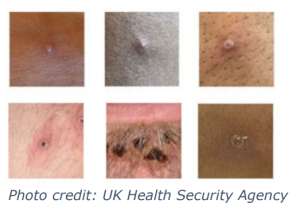
• Sexual or intimate contact (including oral, anal, and vaginal sex)
• Hugging, kissing, cuddling, and massage
• Sharing a bed, towel, or clothes that have not been washed
Mpox does not spread from person to person through:
• Casual conversation with someone who is infected
• Walking by someone who is infected
What are symptoms of mpox?
Skin rash on any part of your body (even if it is only 1 or 2 spots); for some people, this rash may be
their only symptom
| • Fever • Chills • Headache • Muscle aches and back aches |
• Swollen lymph nodes • Feeling tired • Respiratory symptoms (nasal congestion, cough, or sore throat) |
You may experience all or only a few symptoms.
Symptoms usually appear within 3 weeks after exposure.
Two doses of the #mpox vaccine are the best protection.
Even if you got your first dose a long time ago, you can still get the second dose. Mpox vaccines are available now for free at your local health department. Find a local health department near you: https://www.vdh.virginia.gov/health-department-locator/
What do I do if I have symptoms?
If you have symptoms, you should separate yourself from other people and pets, cover your rash, and contact your healthcare provider. It is important to call ahead before going to a healthcare facility and let them know that you are concerned about mpox. You should avoid close physical contact with others until you have talked with your provider.
How can mpox be prevented?
Get Vaccinated. The two-dose mpox vaccine is recommended for people with known exposure to someone with mpox or those at high risk of exposure. For the most protection, it is important to get both doses of the vaccine. To see if you are eligible for vaccination, visit CDC’s mpox webpage. If you are eligible visit the CDC vaccine finder.
Avoid close, skin-to-skin contact with another person’s rash or scabs. Avoid kissing, hugging, cuddling or having sex with someone who is infected. Do not share eating utensils and cups. Do not share bedding, towels, or personal grooming devices.
Wash your hands with soap and water or use an alcohol-based hand sanitizer after contact with infected individuals.
Wear a mask if you think you have mpox and need to have close face-to-face contact with other people or need to have close contact with someone who may be infected.
Consider the events you attend and your behavior at those events. If there is close, prolonged skin-to-skin contact, the risk of spreading mpox is higher.
Treatment for mpox
Antivirals, such as tecovirimat (TPOXX), may be recommended for people who are more likely to get severely ill, like those with weakened immune systems. Talk to your healthcare provider about treatment or look into the Study of Tecovirimat (TPOXX) for Human Monkeypox Virus (STOMP) trial which offers free treatment and people can participate in the trial remotely. Those diagnosed with mpox may also need treatment for symptoms such as pain, itching, nausea and vomiting.
Where can I get more information about mpox?
VDH website www.vdh.virginia.gov/mpox


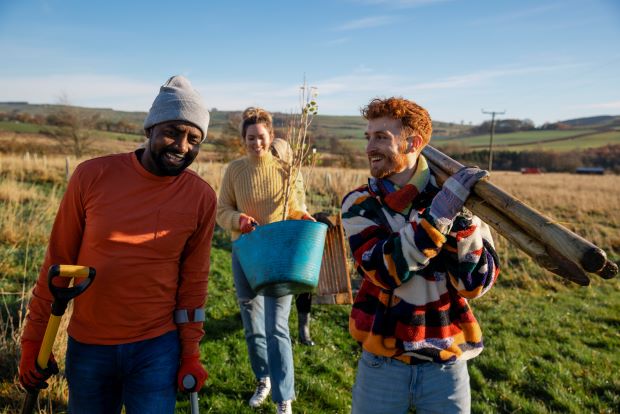


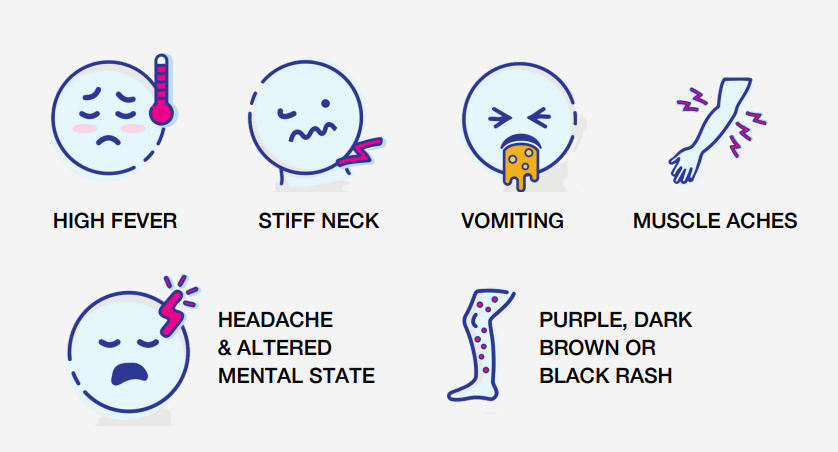
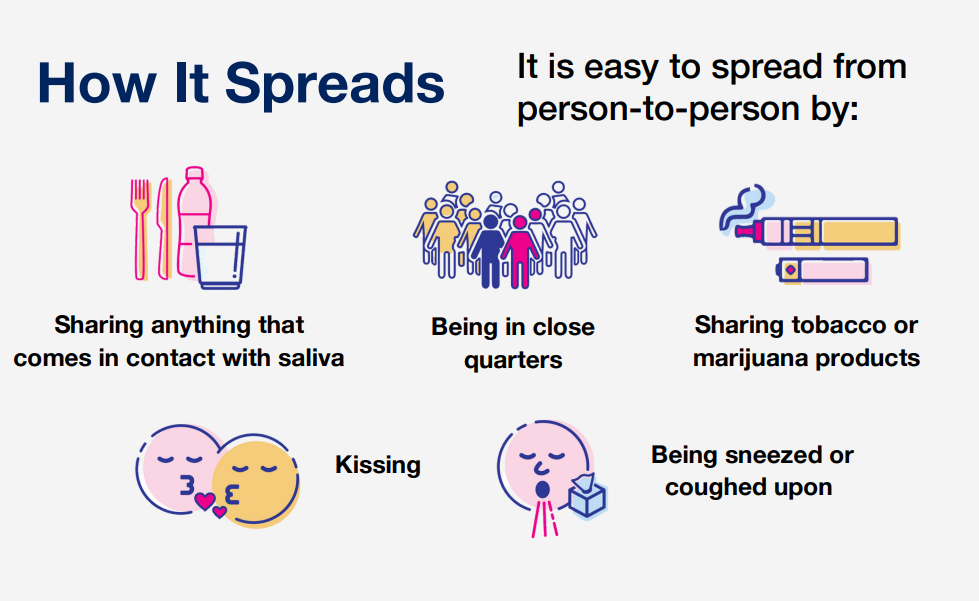
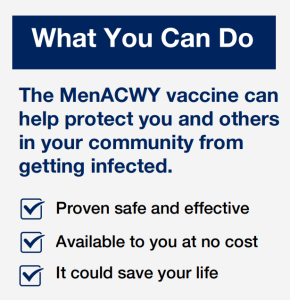 People at increased risk for meningococcal disease should make sure they are up-to-date on the MenACWY vaccine.
People at increased risk for meningococcal disease should make sure they are up-to-date on the MenACWY vaccine.

